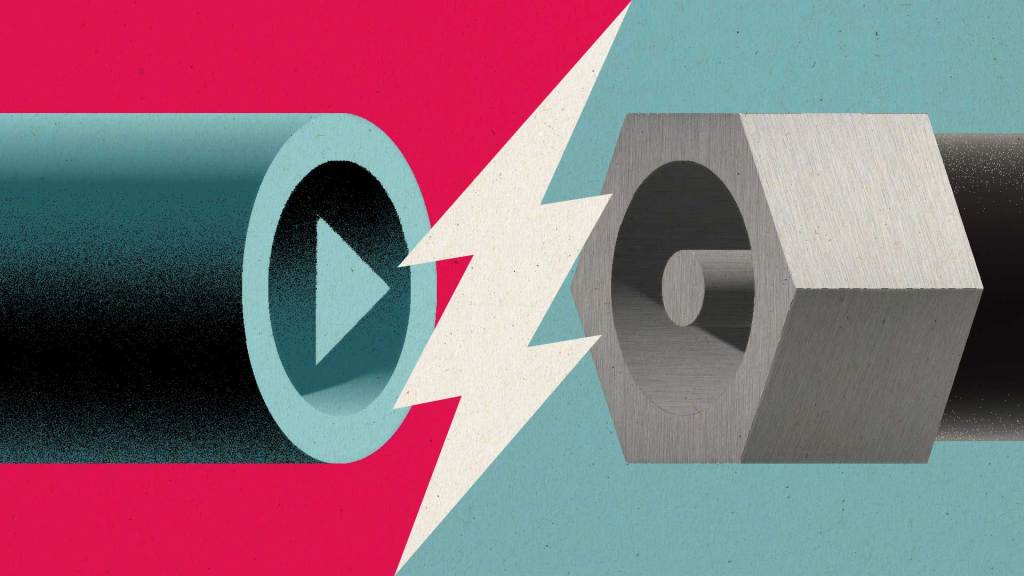Why Broadcast Networks Can Coexist With Streamers for the Time Being
In this article
Conventional wisdom is that streaming is overshadowing linear TV more and more with every passing month, but, for the moment at least, broadcast networks seem to have found a way to coexist with SVOD.
As studios’ content distribution strategies have begun growing more nuanced compared with the “flood the zone” approach of the peak TV era (discussed in the latest VIP+ special report, “Production Pipelines”), the legacy media companies are starting to leverage the symbiosis between their linear and streaming platforms, with the right content able to generate engagement on both.
The continued value of the networks is evinced by Nielsen data indicating that despite streaming’s larger share of overall U.S. TV viewing time vs. broadcast or cable, linear networks still capture the majority of viewing for every traditional media conglomerate.
While this data, collected in September, was likely skewed by the start of the NFL season (this was the most recent data Nielsen would provide), and while it’s true that network TV viewership has declined significantly amid the streaming revolution, the fall season also saw a small bevy of scripted hits for the networks, with some putting up numbers that Variety noted “would have been impressive a decade ago.”
That specifically referred to ABC’s “High Potential,” a series garnering strong viewership among adults under 50 (a demographic highly prized by advertisers), especially on streaming. Indeed, Variety found in a midseason analysis that the drama ranked “as the No. 12 show of the fall” in the demo, per Nielsen live+7-day linear data, “but then shoots to No. 1 when seven days of streaming viewership is included.”
Additional Nielsen and first-party streaming data provided by ABC shows that “High Potential,” along with fellow Tuesday drama “Will Trent,” has continued to perform strongly in the new year. With linear and streaming viewers counted, both shows reached back-to-back series ratings highs with their Jan. 7 premieres and the following week’s episodes and nearly equaled those with Jan. 21’s entries.
Notably, seven-day SVOD viewership for both shows has continuously risen with each episode since Jan. 7 (though “High Potential” streaming is down from its fall average, per Nielsen, even as total viewership is up).
Indeed, the key point here is not just that broadcast network shows are managing to draw impressive ratings in 2025 but that sizable shares of their viewership — especially among the younger viewers networks so desperately covet — are coming from SVOD platforms. More than two-thirds of viewers 18-49 now watch “High Potential” on streaming over the seven-day window, compared with around one-third of the total audience.
Nor is this phenomenon limited to ABC. CBS and Nielsen data shared exclusively with VIP+ shows that, over the course of the fall season (ending with the midseason hiatus), hit dramas “Tracker” and “Matlock” also received about 30% of their total viewership on streaming. During their first 35 days of availability, episodes of “Tracker” averaged more than 5.5 million SVOD viewers, while “Matlock” averaged around 5 million out of 18 million and 16.1 million multiplatform viewers, respectively.
It’s not so clear what is attracting younger viewers to these shows, but what is apparent is that while SVOD has largely superseded the role of cable (including as an outlet for reruns of popular broadcast shows), the networks still fulfill important functions — high episode counts, steady and consistent weekly viewership, efficient budgets — streaming has not yet mastered.
Furthermore, the generally broad sensibilities of network TV clearly still appeal to viewers weaned on riskier, edgier streaming content — as should be apparent from the popularity of older broadcast shows on streaming platforms.
As a result, the networks remain valuable providers of content for their parent companies, especially as programming budgets have tightened and splashy, expensive streaming originals have been pared back. And while SVODs seem to be moving their programming toward more broadcast-like sensibilities (as I’ve discussed previously), good old-fashioned network shows are serving them well in the meantime.
Now dig into the VIP+ subscriber report ...










